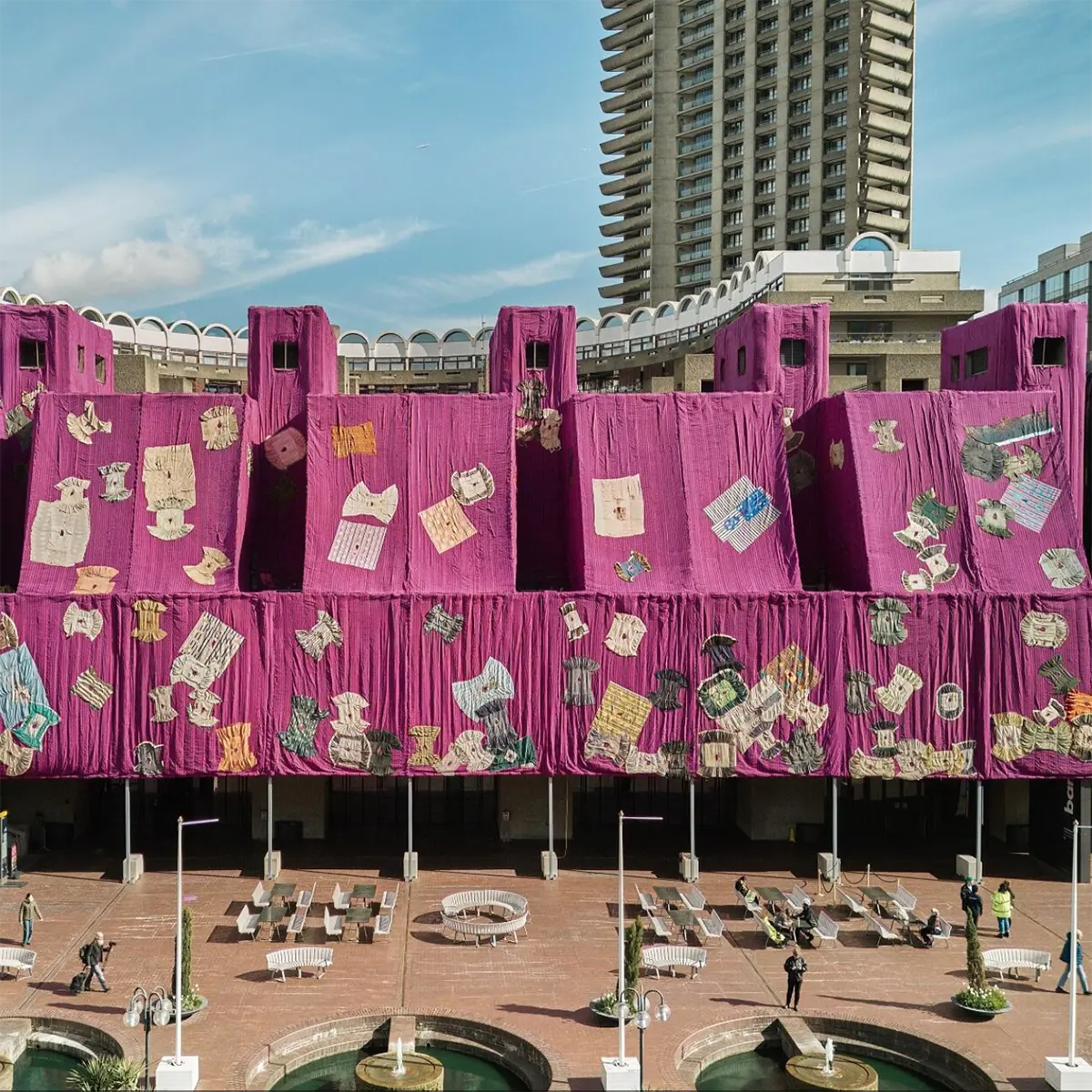Ghanaian artist Ibrahim Mahama has transformed the Barbican Centre in London with his large-scale public art installation. Purple Hibiscus, made of 2,000 square meters of woven cloth, envelops the lakeside facade of the brutalist building in vibrant shades of pink and purple.
Ibrahim Mahama, inspired by the dull surroundings of grey concrete, decided to inject color into the landscape. More than 1,000 weavers and seamstresses in Tamale, Ghana, collaborated to create the artwork, showcasing their craftsmanship and creating a striking contrast against the building’s concrete exterior and the sky. This project not only pays homage to London’s textile heritage but also celebrates Ghana’s rich history of textiles, including the renowned kente cloth.
Mahama’s large-scale public art installations emphasize collective labor and the cultural significance of textiles. For instance, he draped jute sacks over the National Theatre in Accra, exploring the history of trade and globalization. He finds beauty in decay, seeing it as a phase of renewed vitality. He finds aesthetic intrigue of rituals. He prioritizes the artistic process over the final product, evident in the massive undertaking of creating Purple Hibiscus in Tamale’s sports stadium.
The artist takes pride in the accomplishment of bringing the textile creation to London and draping it on the Barbican’s post-World War Two brutalist structures. He sees it as a beautiful juxtaposition of labor forms from different eras, bridging the gap between tradition and modernity. He is fascinated by the billowing forms of the Batakari tunics, which create optical effects resembling a dance, suggesting that “Purple Hibiscus” performs its own unique dance when the wind blows.
Mahama’s contribution emphasizes the transfer of intergenerational knowledge and the significance of cherished belongings and tradition. While offering a subtle interpretation of the political power of textiles, his work also explores fabric’s role in global trade, using Chinese threads and referencing London’s historical ties to the rag trade.
Born in Tamale in 1987, Mahama gained global recognition in 2012 with an installation covering the National Theatre in Accra using jute sacks. In 2019, he displayed 50 national flags on the Rockefeller Center for Frieze New York. Once the Barbican commission is removed, Mahama plans for it to return to Ghana as a public artwork.



